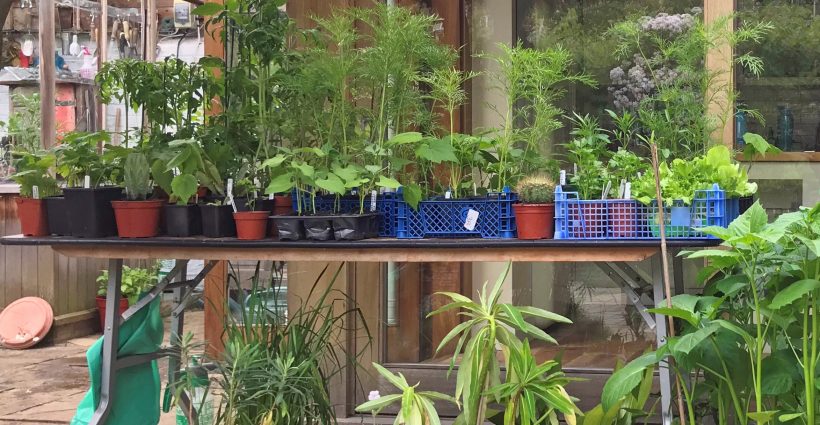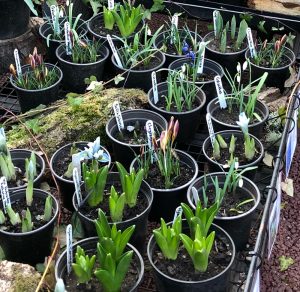designed for the way women work.

Dividing Perennials and Potting Them Up for Plant Sales and Plant Swaps
Category: Flower Gardens, Garden Planning, How-To Projects, Presenting "The Curious Gardener"
You volunteered to participate in your local plant sale fund raiser or plant swap, and now it’s time to make good on your promise! Many plant sales that were scheduled for spring were postponed until fall, which gardeners know is one of the best times to plant! So go into your garden and dig up some perennials or bulbs, divide them, and pot them up. You can even propagate some houseplants if you leave enough time.
The night before you plan to divide your plants water them well. Organize your containers based on what plants you are dividing. Don’t use containers that are too small for the divisions. Clean them by emptying out any old soil and plant material. You can wash them if you want.
Avoid digging up your plants during the middle of the day when the sun is full on and it may be hot, as the plants may be stressed already.
Horticulturist Ruth Clausen suggests that if you are dividing large perennials such as ornamental grasses, daylilies, hosta, monarda and daisies, you dig them up out of the ground and use 2 digging forks back to back, prying them away from each other to loosen. Smaller perennials such as veronica, coreopsis and ladies mantle can be dug out with a fork or spade and hand separated. If dividing peonies be sure to have 3-4 eyes per division.
To learn these and other methods of dividing perennials, based on instruction I received at the NY Botanical Garden, click here.

Ordinarily when dividing perennials it’s best to cut back the stems and flowers to make them easier to work with. But for a plant sale you may want to leave flowers and buds on so they’re showier. In that case include instructions suggesting that flowers and buds be removed when the plant is put in the ground to encourage root development. When a plant is trying to establish itself the priority must be given to root growth.
After potting up your plant divisions park them in the shade and water them well until your plant sale.
If you’re concerned about invasives, Ruth offers these suggestions: “Invasives must be removed from any suspicious divisions. If the area where the mother plants live are weed-infested, I suggest washing the roots of the divisions before potting up. Or alert your customer that it needs to be done! Remove anything that looks suspicious—bulbs, tiny corms, seedlings, rhizomes, runners, etc.”
For a fall sale, you can dig up crowded daffodils and other bulbs in your garden and add them to your plant sale too. Fenella Heckscher, horticulture co-chair of the Zone III GCA garden club I belong to, says she plans to dig up crowded daffodil bulbs in her garden to thin them out and offer to others. She likes that they’re good for naturalizing and deer don’t eat them. Our club plant sale may also include cuttings from houseplants that were started back in July so they’d be ready for our sale later this month.
 It’s important to label your plants. Find a tag and write the plant name, preferably including the common as well as botanical name, approximately how old it is, where it lived in your garden and any cultural information that would be helpful to its new owner.
It’s important to label your plants. Find a tag and write the plant name, preferably including the common as well as botanical name, approximately how old it is, where it lived in your garden and any cultural information that would be helpful to its new owner.
Plant swaps are fun too, and often involve houseplants and take place in urban settings. For more information about plant swaps see this Gardenista article: https://www.gardenista.com/posts/plant-swaps-how-to-trade-houseplants-cuttings-seeds/



Very timely. Our A-J Garden club plant sale is September 12th here in Anna Illinois. Past week to 10 days we have had good to overly good rains.(Hard to mow the grass) I am getting ready to dig up double flower orange day lilies so your suggestion of using two forks was just what I needed to be reminded of.
Due to the pandemic our May sale was cancelled so we are all geared up for this one. Keep the hints coming.
I like your suggestion to water the night before you plan to dig plants. I also like the suggestion of using to digging forks back to back to separate larger plants.